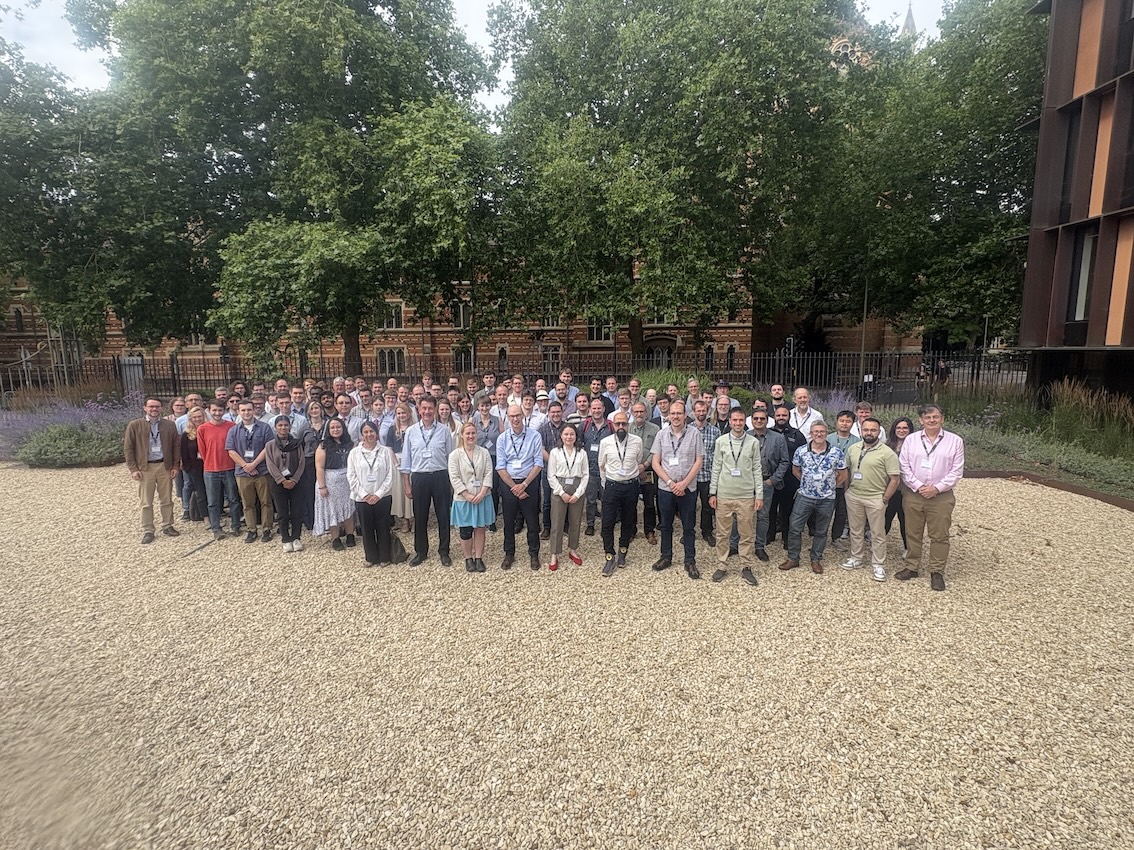The Particle Accelerators and Beams Conference 2025
From the 9th-10th July this year, accelerator scientists across the UK and beyond gathered at the IOP's Particle Accelerators and Beams Conference 2025 (PABG 2025). As the UK's flagship annual meeting for the accelerator community, the event returned to Oxford for the first time since 2017. It brought together accelerator and beams experts and students to showcase cutting-edge developments in beam physics and accelerator technology. With approximately 90 attendees, 23 posters, 34 talks, and an vibrant social programme, this year’s conference was a resounding success. Researchers from the John Adams Institute played a key role throughout, both on stage and behind the scenes.
Several JAI-affiliated researchers delivered outstanding contributions:
- Philip Burrows (University of Oxford) delivered the opening address setting an inspiring tone for the event
- Richard D’Arcy (University of Oxford) presented a compelling plenary, “HALHF – A hybrid, asymmetric, linear Higgs factory based on plasma‑wakefield and radio‑frequency acceleration”
- Adrian Oeftiger (University of Oxford) explored beam dynamics in his talk titled “Coherent Stability versus Dynamic Aperture – Pushing the High‑Intensity Frontier for Hadron Beam Production”
- Hannah Wakeling (University of Oxford) spoke on accelerator sustainability with “Communicating high‑level environmental sustainability guidelines for large accelerator facilities”
- Seb Wilkes (University of Oxford) presented research evenly titled “Diffusion”, a look at diffusion within beam dynamics
- Ginevra Casati (Imperial College) shared her insights in “Proton beam divergence measurements from radiation pressure driven shock acceleration”
- Runfeng Luo (Imperial College) delved into advanced simulation with “Efficient Free‑Electron Laser Modelling Using a Lorentz‑Boosted Coordinate System”
In addition to their talks, Philip Burrows and Richard D’Arcy joined the high-level "Future funding of accelerator science and technology” panel discussion, joining experts from academia and national labs: Nick Bazin (AWE), Stewart Boogert (Cockcroft Institute), Jim Clarke (ASTeC), and Peter Ratoff (Lancaster University). They addressed critical issues such as long-term investment in accelerator R&D within the UK, the balance between core science and industrial applications, and expanding UK leadership in next-generation facilities. Their insights - blending strategic vision with day‑to‑day funding realities - garnered strong audience participation and sparked a lively Q&A.

Panellists at PAGB 2025
Beyond its packed scientific agenda, PABG 2025 also featured a memorable social programme. Highlights included a lively poster session and drinks reception, where conversations flowed as easily as the refreshments, sparking new ideas and collaborations. The conference dinner at the iconic Blavatnik School of Government offered a formal yet celebratory atmosphere, complete with an awards ceremony recognising outstanding academic and poster contributions. The evening included a magical performance by Chris Webb and the delights of The Ukes of Hazzard, a roaming ukulele band. These were all a total hit with delegates. The conference finally rounded off with tours of the Diamond Light Source, ISIS Neutron and Muon Source and Extreme Photonics Application Centre (EPAC) accelerator facilities at Harwell Campus, giving guests rare opportunity to engage directly with the UK’s leading technical infrastructure.
PABG 2025 once again proved itself to be an essential fixture in the UK accelerator calendar. With fascinating talks, posters and a vibrant social programme bringing the particle accelerators and beams field together, this conference continues to serve as an indispensable catalyst for innovation, collaboration, and leadership in particle accelerator R&D. What was highlighted by the conference is clear: when you combine world‑class research and an environment that nurtures connections and collaboration, the future of accelerator science in the UK looks bright!

The PABG 2025 Cohort




